
- Home
- Travel Packages
- Top Destination
-
Travel Attraction
By Category
Top Attraction

- Travel Agents
- Car Rentals
- Hotels
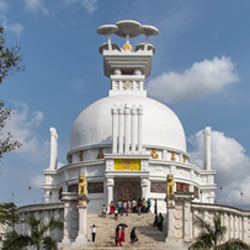
About Dhauli Hill, Bhubaneswar History Dhauli Hill in Bhubaneswar, Odisha, is a significant historical site that holds immense importance in Indian history. It is the location where the Kalinga War took place in 261 BC, resulting in a significant transformation in Emperor Ashoka’s life. After witnessing the devastating effects of war, Ashoka renounced violence and embraced Buddhism, leading to the spread of this peaceful religion across India. Architecture and Design The hill is adorned with a rock edict of Ashoka, depicting his conversion to Buddhism and his message of non-violence. The Shanti Stupa at Dhauli Hill is a prominent structure, symbolizing peace and harmony. The architectural design of the stupa showcases the influence of Buddhist art and culture, making it a serene and spiritually uplifting place for visitors. Best Time to Visit The best time to visit Dhauli Hill is during the winter months, between October and February. The weather during this time is pleasant, making it easier for tourists to explore the site comfortably. Additionally, the lush green surroundings of Dhauli Hill are at their most vibrant during the winter, creating a picturesque setting for visitors to enjoy. Cultural Significance Dhauli Hill holds immense cultural significance as it marks the beginning of Emperor Ashoka’s journey towards peace and non-violence. The site serves as a reminder of the destructive consequences of war and the importance of embracing compassion and harmony. The influence of Buddhism can be felt strongly at Dhauli Hill, making it a sacred place for followers of this peaceful religion. Pilgrimage Practices Pilgrims visiting Dhauli Hill often engage in spiritual practices such as meditation and prayer. They pay homage to Emperor Ashoka and seek blessings for peace and enlightenment. The peaceful ambiance of the hill makes it an ideal place for introspection and spiritual reflection, allowing pilgrims to connect with their inner selves and find solace in the teachings of Buddhism. Dress Code and Etiquette Visitors to Dhauli Hill are advised to dress modestly and respectfully, keeping in mind the sacred nature of the site. It is recommended to wear comfortable clothing and remove footwear before entering the Shanti Stupa or any other religious structures. Silence and reverence are expected from visitors to maintain the sanctity of the place and respect the spiritual beliefs of others. Activities and Experiences Visitors to Dhauli Hill can engage in a variety of activities and experiences, including exploring the rock edicts of Emperor Ashoka, admiring the intricate carvings on the Shanti Stupa, and enjoying panoramic views of the surrounding landscapes. Cultural events and festivals are also held at Dhauli Hill, providing visitors with an opportunity to immerse themselves in the rich heritage and traditions of Odisha. Art and Religious Symbols The art and religious symbols at Dhauli Hill reflect the spiritual heritage of Buddhism and the teachings of Emperor Ashoka. Intricate carvings, sculptures, and inscriptions adorn the site, depicting scenes from the life of Buddha and the message of peace and non-violence. The Shanti Stupa, in particular, is a masterpiece of Buddhist art, symbolizing the eternal quest for harmony and tranquility. Local Insights Local residents and guides offer valuable insights into the history and significance of Dhauli Hill, sharing stories and legends associated with the site. Visitors can learn about the cultural traditions of Odisha and the impact of Buddhism on the region, gaining a deeper understanding of the spiritual heritage that Dhauli Hill represents. Engaging with locals provides a unique perspective on the site and enhances the overall experience of exploring this sacred place.
Explore More
Nestled in an inner fold of the Sahyadri hills, 100 kms away from Aurangabad are the 30 rock-cut caves of Ajanta, famous for its cave painting or frescoes of many colors. They contain numerous images of Buddha. Caves 1,2,16 and 17 have the best-preserved paintings. The magnificient depictions of the bodhisattvas Avalokitesvara and Padmapaniin are particularly well known. The Ajanta Caves are a World Heritage site cut from the volcanic lava of the Deccan in the forest ravines of the Sahyadri Hills. They are set in beautiful sylvan surroundings, providing a unique combination of architecture, sculpture and paintings.
Explore More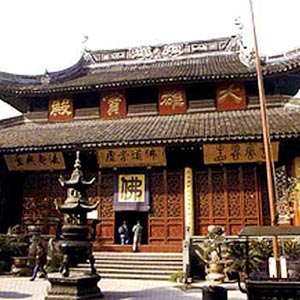
The Jade Buddha Temple is a Buddhist temple located in Shanghai, China. It was founded in 1882 during the Qing Dynasty. The temple houses two jade Buddha statues that were brought to China from Burma. The temple was originally known as the Jade Buddha Monastery and was built to house the two statues, which were a gift to the monks from a Chinese monk who traveled to Burma. Architecture and Design The architecture of the Jade Buddha Temple is a beautiful example of traditional Chinese Buddhist temple design. The structures are adorned with intricate carvings and colorful decorations. The temple complex consists of several halls, courtyards, and pagodas. The main hall, where the jade Buddha statues are enshrined, is a masterpiece of Chinese architecture, with a grand entrance and ornate decorations. Best Time to Visit The best time to visit the Jade Buddha Temple is during the spring and autumn months when the weather is mild and pleasant. It is also recommended to visit early in the morning to avoid crowds and to experience the temple in a peaceful and serene atmosphere. Cultural Significance The Jade Buddha Temple is a significant cultural and religious site in Shanghai, attracting both tourists and devout Buddhists. The temple is a place of worship, meditation, and reflection for many Chinese people and visitors from around the world. It is also a symbol of the enduring legacy of Buddhism in China and the importance of spiritual practices in Chinese culture. Pilgrimage Practices Pilgrims visiting the Jade Buddha Temple often participate in traditional Buddhist practices such as chanting, meditation, and making offerings to the Buddha statues. Many pilgrims also perform rituals to seek blessings, good fortune, and spiritual guidance. The temple is a place of pilgrimage for Buddhists seeking enlightenment and inner peace. Dress Code and Etiquette Visitors to the Jade Buddha Temple are encouraged to dress modestly and respectfully, covering their shoulders and knees. It is also important to remove footwear before entering the temple buildings as a sign of respect. Visitors should refrain from loud talking, making noise, or taking photographs in sacred areas of the temple. It is important to observe proper etiquette and show reverence for the temple and its religious significance. Activities and Experiences Visitors to the Jade Buddha Temple can engage in a variety of activities and experiences, including exploring the temple grounds, attending Buddhist ceremonies, and learning about the history and teachings of Buddhism. There are also opportunities to participate in meditation sessions, calligraphy classes, and guided tours of the temple complex. Visitors can immerse themselves in the spiritual atmosphere of the temple and gain insight into Buddhist practices and beliefs. Art and Religious Symbols The Jade Buddha Temple is adorned with exquisite artwork and religious symbols that represent the teachings and traditions of Buddhism. The temple's architecture, decorations, and statues are imbued with symbolic meaning and spiritual significance. The jade Buddha statues themselves are considered sacred objects of worship, embodying the virtues of compassion, wisdom, and enlightenment. Visitors can appreciate the beauty and symbolism of the temple's art and religious symbols as they explore the temple complex. Local Insights Visiting the Jade Buddha Temple provides a unique opportunity to gain insights into Chinese culture, history, and spirituality. Local residents and monks at the temple are often willing to share their knowledge and experiences with visitors, offering a deeper understanding of Buddhism and Chinese traditions. By interacting with locals, participating in temple activities, and observing daily rituals, visitors can gain a greater appreciation for the cultural richness and spiritual depth of the Jade Buddha Temple.
Explore More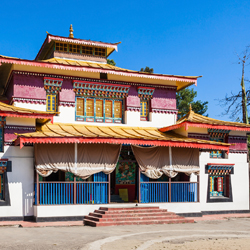
About Enchey Monastery The Enchey Monastery, located in Gangtok, Sikkim, is a prominent Buddhist monastery that holds great religious significance for the local community. It is known for its serene surroundings and peaceful ambiance, making it a popular destination for spiritual seekers and tourists alike. Architectural Facts The Enchey Monastery is a beautiful example of traditional Tibetan architecture, with intricate wood carvings and colorful murals adorning its walls. The main shrine houses a statue of Buddha along with other deities, and the prayer hall is adorned with prayer flags fluttering in the wind. History Founded in the 19th century, the Enchey Monastery has a rich history tied to the Nyingma school of Tibetan Buddhism. It is believed to be built on a site blessed by Lama Druptob Karpo, a revered sage who meditated at the location. Location The Enchey Monastery is located just 3 kilometers from Gangtok city center, making it easily accessible for visitors. The monastery is nestled amidst lush greenery and offers stunning views of the surrounding mountains. Visiting Hours The Enchey Monastery is open to visitors from 6 am to 4 pm every day, allowing ample time for exploration and prayer. It is recommended to visit early in the morning to experience the monks' chanting prayers. Gurudwara Services and Events The Enchey Monastery hosts special events and festivals throughout the year, including the annual Cham Dance festival that attracts devotees from far and wide. Additionally, the monastery offers weekend retreats and meditation sessions for those seeking spiritual guidance. Regarding timings, the monastery is open on weekends, providing visitors with the opportunity to participate in religious services and learn more about Tibetan Buddhism. Accessibility and Directions Visitors can reach the Enchey Monastery by car or public transport, with ample parking available near the entrance. The monastery is wheelchair accessible, ensuring that all visitors can explore its sacred grounds comfortably. Visitor’s Information Entry to the Enchey Monastery is free of charge, but donations are welcome to support the upkeep of the monastery. Visitors are advised to dress modestly and remove their shoes before entering the prayer hall as a sign of respect. Guides are available for those who wish to learn more about the monastery's history and significance. Nearby Attractions While visiting the Enchey Monastery, visitors can explore other nearby attractions such as the Namgyal Institute of Tibetology, Tsomgo Lake, and the Rumtek Monastery. These sites offer further insight into Tibetan culture and history, making for a fulfilling and educational journey. Best Time to Visit The best time to visit the Enchey Monastery is during the months of October to December when the weather is pleasant and clear, offering stunning views of the Himalayan mountains. The monastery's annual festivals and events also take place during this time, providing a unique cultural experience for visitors.
Explore More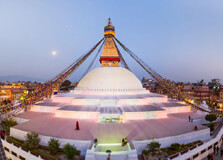
About Boudhanath Stupa, Kathmandu History, Architecture and Design The Boudhanath Stupa, located in Kathmandu, Nepal, is one of the largest stupas in the world. It is believed to have been built in the 14th century and is a significant pilgrimage site for Buddhists. The stupa's unique architecture and design showcase a blend of Nepali and Tibetan styles, with a massive dome, a spire with ancient symbols, and prayer wheels surrounding the structure. The stupa's origins date back to when the Tibetan king Songtsen Gampo converted to Buddhism and built the stupa as a symbol of peace and harmony. Best Time to Visit The best time to visit the Boudhanath Stupa is during the early morning or late afternoon when the crowds are smaller, and the atmosphere is more tranquil. The stupa is also beautifully illuminated at night, making it a magical sight to behold. The months of October to December and February to April are considered the best times to visit Kathmandu, as the weather is pleasant, and the skies are clear. Cultural Significance The Boudhanath Stupa holds immense cultural significance as a UNESCO World Heritage Site and a symbol of Buddhism in Nepal. It is a sacred pilgrimage site for Buddhists worldwide and is believed to radiate peace and positive energy. The stupa represents the five elements – earth, water, fire, air, and wisdom – and is a place of prayer, meditation, and spiritual reflection for devotees. Pilgrimage Practices Visitors to the Boudhanath Stupa can participate in traditional Buddhist practices such as circumambulating the stupa in a clockwise direction, spinning prayer wheels, and offering butter lamps and incense. Many pilgrims also chant mantras and make offerings to the Buddha as a form of devotion and spiritual purification. It is important to respect the sacredness of the stupa and follow local customs and traditions when visiting. Dress Code and Etiquette When visiting the Boudhanath Stupa, it is essential to dress modestly and respectfully, covering your shoulders and knees. Visitors are also expected to remove their shoes before entering the stupa grounds and to maintain a quiet and reverent demeanor while inside. It is customary to walk around the stupa in a clockwise direction and to refrain from loud conversations, smoking, or taking photos in certain areas. Activities and Experiences Visitors to the Boudhanath Stupa can engage in a range of activities and experiences, including attending prayer ceremonies, receiving blessings from monks, and shopping for traditional Tibetan Buddhist artifacts and souvenirs in the surrounding market stalls. Cultural events and festivals are also held at the stupa throughout the year, offering visitors a chance to witness vibrant rituals and celebrations. Art and Religious Symbols The Boudhanath Stupa is adorned with exquisite artwork and religious symbols that reflect the rich cultural heritage of Nepal and Tibet. Intricate carvings, colorful paintings, and elaborate sculptures depict scenes from Buddhist mythology and teachings, while sacred symbols such as the eyes of the Buddha and the eternal knot adorn the stupa's facade. These artistic elements serve as visual aids for meditation and contemplation for devotees. Local Insights Local residents and monks play a vital role in maintaining the spiritual and cultural integrity of the Boudhanath Stupa. They offer insights into the history and significance of the stupa, guide visitors in performing rituals and practices, and share stories and legends passed down through generations. Engaging with locals can provide a deeper understanding of the stupa's importance in the community and foster connections between visitors and the living traditions of Buddhism in Nepal.
Explore More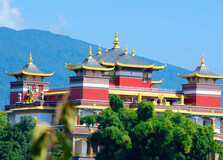
About Kopan Monastery History The Kopan Monastery is located on a hilltop in Kathmandu, Nepal. It was established in 1971 by Lamas Thubten Yeshe and Thubten Zopa Rinpoche. The monastery was initially a retreat center for Western students seeking to learn about Tibetan Buddhism. Over the years, it has grown into a thriving monastery with a large community of monks, nuns, and lay practitioners. Architecture and Design The architecture of Kopan Monastery is a blend of traditional Tibetan and modern styles. The main temple features intricate wood carvings, colorful murals, and a large statue of Buddha. The surrounding buildings house meditation halls, classrooms, and living quarters for the residents. The serene gardens and courtyards provide a peaceful setting for contemplation and prayer. Best Time to Visit The best time to visit Kopan Monastery is during the spring and fall seasons when the weather is pleasant and the surrounding hills are lush green. The monastery also hosts special events and teachings during these times, attracting visitors from around the world. Cultural Significance Kopan Monastery holds great cultural significance as a center for learning and practice of Tibetan Buddhism. It offers teachings, retreats, and meditation sessions to help individuals on their spiritual journey. The monastery also plays a vital role in preserving and promoting Tibetan Buddhist traditions in Nepal. Pilgrimage Practices Many devotees visit Kopan Monastery as part of their pilgrimage to sacred Buddhist sites in the Kathmandu Valley. Pilgrims engage in practices such as prostrations, chanting, and making offerings to the Buddha. The serene atmosphere of the monastery provides the perfect setting for reflection and spiritual growth. Dress Code and Etiquette Visitors to Kopan Monastery are expected to dress modestly and respectfully. It is customary to wear attire that covers the shoulders and knees when entering the temple and other sacred areas. Visitors are also encouraged to observe silence and refrain from using electronic devices during meditation sessions and teachings. Activities and Experiences Visitors to Kopan Monastery can participate in a variety of activities and experiences, including meditation courses, teachings on Buddhist philosophy, and cultural events. The monastery offers opportunities for volunteering, attending retreats, and engaging in spiritual practices under the guidance of experienced lamas and teachers. Art and Religious Symbols The artwork and religious symbols found at Kopan Monastery are rich in symbolism and meaning. Intricate thangka paintings, statues of Buddhist deities, and sacred symbols adorn the temples and prayer halls. These art forms serve as visual aids for meditation and contemplation, inspiring practitioners on their spiritual path. Local Insights Local residents and monastic staff at Kopan Monastery offer valuable insights into Tibetan Buddhist culture and traditions. Visitors can engage in conversations with monks and nuns, participate in traditional rituals, and learn about the daily life of the monastery. By interacting with the local community, visitors gain a deeper understanding of the spiritual practices and values upheld at Kopan Monastery.
Explore More
About Pullahari Monastery History Pullahari Monastery, located in Kathmandu, Nepal, has a rich history dating back to the 15th century. It was founded by the revered Tibetan Buddhist master, Chokyi Dorje, who played a significant role in spreading the teachings of the Sakya tradition in the region. Architecture and Design The monastery boasts traditional Tibetan architecture, with intricate carvings and colorful murals adorning its walls. The main prayer hall is adorned with stunning Thangka paintings and houses statues of various Buddhist deities. The peaceful surroundings and well-maintained gardens add to the serene ambiance of the monastery. Best Time to Visit Cultural Significance Pullahari Monastery holds immense cultural significance for both locals and visitors. It serves as a center for Buddhist teachings, meditation, and spiritual practices, attracting devotees seeking solace and enlightenment. Pilgrimage Practices Many pilgrims visit the monastery to pay their respects, participate in prayer ceremonies, and seek blessings from the resident monks. The monastery also organizes retreats and teachings for those looking to deepen their understanding of Buddhist philosophy. Dress Code and Etiquette Visitors are advised to dress modestly and respectfully while visiting the monastery. It is customary to remove shoes before entering the prayer halls and to maintain a quiet and respectful demeanor during ceremonies and interactions with the monks. Activities and Experiences Art and Religious Symbols The monastery is adorned with intricate artwork and religious symbols that hold deep spiritual significance for practitioners. The Thangka paintings, statues, and prayer flags serve as visual aids for meditation and contemplation, enriching the spiritual experience of visitors. Local Insights Visitors to Pullahari Monastery have the opportunity to immerse themselves in the local culture and gain insights into the Buddhist way of life. Interacting with resident monks, participating in meditation sessions, and attending teachings offer a unique glimpse into the spiritual traditions of Nepal.
Explore More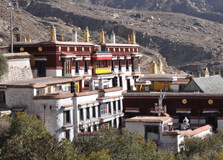
About Drepung Monastery, Lhasa History The Drepung Monastery, located in Lhasa, Tibet, is one of the largest and most important monasteries in Tibetan Buddhism. It was founded in 1416 by Jamyang Choge Tashi Palden, a disciple of Tsongkhapa, the founder of the Gelug sect of Tibetan Buddhism. At its peak, Drepung housed over 10,000 monks, making it the largest monastery in the world. However, during the Chinese Cultural Revolution in the 1950s, many of its buildings were destroyed, and the number of monks drastically reduced. Architecture and Design The Drepung Monastery is a stunning example of traditional Tibetan architecture, with white walls and golden roofs set against a backdrop of snow-capped mountains. The main assembly hall, called the Coqen Hall, is adorned with intricate murals, thangkas, and statues of Buddhas and bodhisattvas. The monastery also features numerous chapels, prayer halls, and meditation caves, all connected by winding staircases and narrow passageways. Visitors can marvel at the intricate woodcarvings, colorful frescoes, and ornate decorations that adorn the monastery's buildings. Best Time to Visit The best time to visit the Drepung Monastery is during the spring and autumn months, from April to June and September to November. The weather during this time is mild and pleasant, making it ideal for exploring the monastery and its surroundings. Avoiding the summer months is advisable, as Lhasa experiences heavy rainfall, and the winter months can be extremely cold and snowy, making travel difficult. Cultural Significance The Drepung Monastery holds immense cultural significance for Tibetan Buddhists, as it is considered one of the three great monasteries of the Gelug sect, along with Sera and Ganden. It has been a center of learning and spiritual practice for centuries, attracting pilgrims and scholars from all over Tibet. The monastery's vast collection of scriptures, religious artifacts, and sacred relics make it a revered site for Buddhists and a place of pilgrimage for those seeking spiritual enlightenment. Pilgrimage Practices Many Tibetan Buddhists undertake pilgrimages to the Drepung Monastery to pay homage to the Buddha and seek blessings from the resident monks. Pilgrims often perform prostrations around the monastery's perimeter, circling the sacred site while reciting prayers and mantras. Some pilgrims also make offerings of butter lamps, incense, and khata scarves as a sign of devotion. The act of pilgrimage is believed to purify the mind, accumulate merit, and deepen one's connection to the teachings of Buddhism. Dress Code and Etiquette Visitors to the Drepung Monastery are required to dress modestly and respectfully, covering their shoulders and knees. Removing hats and shoes before entering the monastery grounds is also customary. While inside the monastery, visitors should refrain from loud talking, photography, or touching religious artifacts. It is important to show reverence and respect for the monks and pilgrims present, following their lead in prayer and ritual practices. Observing these guidelines ensures a harmonious and respectful visit to this sacred site. Activities and Experiences Visitors to the Drepung Monastery can participate in various activities and experiences, such as attending prayers and teachings conducted by the resident monks. Guided tours of the monastery provide insight into its history, architecture, and religious practices. Visitors can also explore the surrounding area, which offers stunning views of the Lhasa Valley and the Himalayan mountains. Immersing oneself in the serene atmosphere of the monastery, meditating in its peaceful courtyards, and witnessing the daily life of the monks are all enriching experiences not to be missed. Art and Religious Symbols The Drepung Monastery is adorned with exquisite works of art, including intricate thangkas, colorful murals, and finely crafted statues of Buddhas and deities. These artistic expressions serve as visual aids for meditation and contemplation, conveying the teachings of Buddhism in a tangible form. Religious symbols such as the lotus flower, the endless knot, and the eight auspicious symbols are prominently featured throughout the monastery, representing various aspects of Buddhist philosophy and practice. Each piece of art is imbued with spiritual significance and serves as a focal point for devotion and worship. Local Insights Visitors to the Drepung Monastery can gain valuable insights into Tibetan culture, history, and spirituality by interacting with the local monks and pilgrims. Engaging in conversations with the monks, attending teachings and ceremonies, and observing daily rituals offer a glimpse into the rich traditions and beliefs of Tibetan Buddhism. Exploring the nearby villages, markets, and temples provides an opportunity to connect with the local community and learn about their way of life. By immersing oneself in the vibrant tapestry of Tibetan culture, visitors can deepen their understanding and appreciation of this unique and ancient land.
Explore More
About Jokhang Temple, Lhasa History The Jokhang Temple in Lhasa, Tibet, is considered one of the most sacred and important temples in Tibetan Buddhism. It was built in the 7th century by King Songtsen Gampo and is said to house a revered statue of Buddha brought to Tibet by the Chinese princess Wencheng. The temple has undergone several renovations and expansions over the centuries, including during the reign of the 5th Dalai Lama in the 17th century. Architecture and Design The Jokhang Temple features a unique blend of Tibetan, Indian, and Nepalese architectural styles. The main building is a four-story structure with a golden roof and white walls adorned with intricately carved wooden decorations. The temple complex is made up of various chapels, prayer halls, and courtyards, each with its own distinct design and religious significance. Best Time to Visit The best time to visit the Jokhang Temple is during the spring and autumn months when the weather is mild and pleasant. The months of April to June and September to November are ideal for exploring Lhasa and experiencing the rich cultural heritage of Tibet. It is advisable to avoid visiting during the winter months when the region experiences harsh weather conditions and heavy snowfall. Cultural Significance The Jokhang Temple is not only a religious site but also a cultural symbol of Tibetan identity and heritage. It serves as a focal point for religious practices, festivals, and rituals, attracting pilgrims and tourists from around the world. The temple is a UNESCO World Heritage Site and is revered by Tibetan Buddhists as a sacred place of worship and meditation. Pilgrimage Practices Pilgrimage to the Jokhang Temple is considered a sacred and meritorious act in Tibetan Buddhism. Devout Buddhists from all over Tibet and beyond travel long distances to visit the temple and offer their prayers and offerings. Pilgrims often perform prostrations around the temple complex, circumambulating the sacred site while chanting prayers and spinning prayer wheels as a form of devotion and purification. Dress Code and Etiquette Visitors to the Jokhang Temple are expected to dress modestly and respectfully, covering their shoulders and knees as a sign of reverence for the sacred site. It is important to remove hats and shoes before entering the temple and to follow the guidance of local guides and monks. Photography is generally not allowed inside the temple, and visitors are advised to observe silence and avoid disturbing worshippers during prayer times. Activities and Experiences Visitors to the Jokhang Temple can participate in various activities and experiences that offer a deeper insight into Tibetan Buddhism and culture. Guided tours of the temple complex provide an overview of its history, significance, and religious practices. Visitors can also witness traditional Tibetan rituals, such as butter lamp offerings, prayer flag ceremonies, and chanting sessions led by monks. Art and Religious Symbols The Jokhang Temple is known for its rich collection of religious art and symbols, including thangka paintings, statues, and intricate woodcarvings. The temple's interior is adorned with colorful murals depicting scenes from Buddhist mythology and teachings. The main chapel houses the Jowo Rinpoche statue, a revered image of Buddha that is said to have miraculous powers and healing abilities. Local Insights Visitors to the Jokhang Temple can gain valuable insights into Tibetan culture and spirituality by interacting with local monks, pilgrims, and artisans. Local guides and interpreters can provide a deeper understanding of the temple's history, architecture, and religious practices. Visitors can also explore the surrounding Barkhor Street, a bustling market area lined with shops selling traditional handicrafts, religious artifacts, and local delicacies.
Explore More
About Sera Monastery History The Sera Monastery in Lhasa, Tibet, was founded in 1419 by Jamchen Chojey, a disciple of the famous Tibetan philosopher Je Tsongkhapa. Originally, the monastery was a complex of colleges housing thousands of monks, but today only a few hundred reside there. Sera Monastery played a significant role in the development of Tibetan Buddhism and is known for its debates on Buddhist philosophy. Architecture and Design The architecture of Sera Monastery is a beautiful example of traditional Tibetan design. The main assembly hall, known as the "Tsokchen," is adorned with intricate murals and statues of Buddhas. The monastery's buildings are built in the traditional Tibetan style, with whitewashed walls, ornate carvings, and pagoda roofs. Best Time to Visit The best time to visit Sera Monastery is during the spring and autumn months, from April to June and September to November. During these times, the weather is pleasant, and the skies are clear, making it ideal for exploring the monastery and enjoying the surrounding scenery. Cultural Significance Sera Monastery is an important cultural and religious site in Tibet. It is one of the three great Gelugpa Monasteries in Lhasa, along with Drepung and Ganden Monasteries. The monastery is a center of Tibetan Buddhism and hosts numerous rituals, ceremonies, and festivals throughout the year. Pilgrimage Practices Many Tibetan Buddhists undertake pilgrimages to Sera Monastery as part of their spiritual practice. Pilgrims often perform prostrations, circumambulate the monastery, and offer prayers and offerings to the Buddhas and bodhisattvas. The practice of pilgrimage is seen as a way to accumulate merit and purify negative karma. Dress Code and Etiquette Visitors to Sera Monastery should dress modestly and respectfully. It is recommended to wear long pants or skirts and shirts that cover the shoulders. Revealing clothing or attire with offensive language or imagery should be avoided. When visiting the monastery, it is important to show respect for the monks, sacred objects, and religious practices. Activities and Experiences Visitors to Sera Monastery can participate in various activities and experiences, such as attending Buddhist teachings and rituals, witnessing the famous debates between monks, exploring the monastery's grounds and buildings, and interacting with the monks. The monastery also offers meditation classes and retreats for those seeking a deeper spiritual experience. Art and Religious Symbols Sera Monastery is renowned for its exquisite art and religious symbols. The monastery's walls are adorned with colorful frescoes depicting Buddhist deities, scenes from the life of Buddha, and Tibetan thangka paintings. The monastery's chapels house statues of Buddhas, bodhisattvas, and other deities, as well as sacred relics and ritual objects. Local Insights Visiting Sera Monastery provides a unique opportunity to gain insights into Tibetan culture, religion, and way of life. Interacting with the monks and attending their debates and rituals can offer a firsthand experience of Tibetan Buddhism. Exploring the monastery's grounds and surrounding area allows visitors to immerse themselves in the rich history and spirituality of Tibet.
Explore More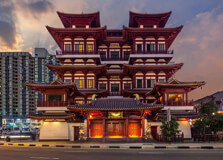
The Buddha Tooth Relic Temple and Museum is a Buddhist temple located in the heart of Chinatown in Singapore. It was founded in 2005 and houses what is believed to be a tooth relic of Gautama Buddha. The temple's design is inspired by the Tang dynasty architectural style, reflecting the rich history and culture of Buddhism in Asia. Architecture and Design The temple's architecture is a blend of traditional Chinese and Tibetan styles, featuring intricate carvings, colorful murals, and sacred artifacts. The main prayer hall is adorned with gold and red decorations, while the rooftop garden offers a peaceful retreat in the bustling city. Best Time to Visit The best time to visit the Buddha Tooth Relic Temple is during the early morning or late afternoon when the temple is less crowded. Avoid visiting during weekends or public holidays to experience a more peaceful and contemplative atmosphere. Cultural Significance The temple is a significant cultural and religious landmark in Singapore, attracting both locals and tourists alike. It serves as a place of worship, meditation, and learning about Buddhist teachings and practices. The presence of the tooth relic symbolizes the Buddha's teachings on compassion, wisdom, and enlightenment. Pilgrimage Practices Pilgrims often visit the temple to pay their respects to the tooth relic and offer prayers for blessings and prosperity. They may participate in rituals such as lighting incense, making offerings, and circumambulating the main hall as a form of devotion and spiritual practice. Dress Code and Etiquette Visitors are required to dress modestly when entering the temple, covering their shoulders and knees. It is also customary to remove shoes before entering the main prayer hall and to maintain a respectful and quiet demeanor while inside the temple premises. Activities and Experiences Visitors can participate in guided tours, meditation sessions, and cultural events held at the temple. They can also explore the museum exhibits showcasing Buddhist artifacts, scriptures, and relics. Don't forget to try the vegetarian meals served at the temple's dining hall for a taste of traditional Chinese cuisine. Art and Religious Symbols The temple's intricate artwork and religious symbols reflect the deep spiritual significance of Buddhism. From the ornate dragon sculptures guarding the entrance to the elaborate mandalas adorning the walls, every detail conveys a sense of reverence and devotion to the Buddha and his teachings. Local Insights Locals in Chinatown often visit the Buddha Tooth Relic Temple to seek blessings for good fortune and health. Many also attend cultural events and festivals held at the temple throughout the year, such as Vesak Day and Lunar New Year celebrations. It is a place where the community comes together to honor their shared heritage and spirituality.
Explore More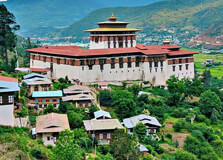
Rinpung Dzong, also known as Paro Dzong, was built in the 15th century by the illustrious Tibetan lama, Drung Drung Gyal. It served as a fortress to defend the valley against invasions from Tibet. Over the centuries, the dzong underwent multiple renovations and expansions, becoming a significant spiritual and cultural center in Bhutan. Architecture and Design The Rinpung Dzong is a fine example of Bhutanese architecture, characterized by whitewashed walls, sloping roofs, and intricate woodwork. The dzong is strategically built on a hill overlooking the Paro valley, providing both defensive advantages and stunning views of the surrounding landscape. Best Time to Visit The best time to visit Rinpung Dzong is during the spring months of March to May and the fall months of September to November. During these times, the weather is pleasant, and the valley is adorned with blooming flowers or colorful autumn foliage. Visitors can also witness traditional Bhutanese festivals held at the dzong during these months. Cultural Significance Rinpung Dzong holds great cultural significance in Bhutan as it is not only a religious center but also a seat of political authority. The dzong serves as the administrative headquarters of the Paro district and houses various government offices. It also hosts important religious ceremonies, festivals, and events that are integral to Bhutanese culture. Pilgrimage Practices Pilgrims from all over Bhutan and even neighboring countries come to Rinpung Dzong to pay their respects, offer prayers, and receive blessings from the resident monks and lamas. Pilgrimage practices at the dzong often involve circumambulating the premises, making offerings, and participating in religious rituals and ceremonies. Dress Code and Etiquette Visitors to Rinpung Dzong are required to dress modestly and respectfully. Both men and women should wear traditional Bhutanese attire or at least clothes that cover their knees and shoulders. It is also important to remove hats and shoes before entering the sacred spaces of the dzong and to maintain a quiet and respectful demeanor while inside. Activities and Experiences Visitors to Rinpung Dzong can engage in various activities and experiences, such as attending religious ceremonies, exploring the ornate temples and courtyards, and enjoying panoramic views of the Paro valley. Guided tours are available to provide insights into the history, culture, and architecture of the dzong. Art and Religious Symbols Rinpung Dzong is adorned with intricate wall paintings, statues, and religious symbols that showcase the rich artistic and spiritual heritage of Bhutan. The murals depict scenes from Buddhist teachings and legends, while the statues represent various deities and enlightened beings revered in Tibetan Buddhism. Local Insights Local residents of Paro often visit Rinpung Dzong to seek blessings, participate in religious festivals, and connect with their cultural roots. They view the dzong as a symbol of community identity and pride, reflecting the enduring traditions and beliefs that have been passed down through generations in Bhutan.
Explore More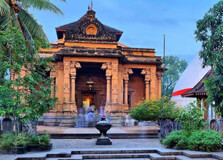
Kelaniya Raja Maha Vihara, located in Colombo, Sri Lanka, is a sacred Buddhist temple with a rich history dating back over 2,500 years. It is believed that Lord Buddha visited this site in the 5th century BC, making it one of the oldest temples in the country. The temple has gone through numerous renovations and expansions over the centuries, but its spiritual significance remains unchanged. Architecture and Design The temple's architecture reflects a blend of traditional Sri Lankan and South Indian styles, with intricate carvings, colorful paintings, and stunning sculptures adorning the buildings. The main stupa stands tall and majestic, while the surrounding structures create a serene and peaceful atmosphere for visitors. Best Time to Visit Cultural Significance Kelaniya Raja Maha Vihara holds great cultural significance for Buddhists in Sri Lanka and around the world. It is a place of worship, meditation, and spiritual reflection, attracting pilgrims and tourists alike who seek to connect with their faith and heritage. Pilgrimage Practices Visitors to the temple often participate in traditional Buddhist practices such as offering flowers, lighting incense, and chanting prayers. Pilgrims may also perform rituals to seek blessings, healing, or guidance from the sacred relics and images within the temple complex. Dress Code and Etiquette When visiting Kelaniya Raja Maha Vihara, it is important to dress modestly and respectfully, covering shoulders and knees. Visitors should remove their shoes before entering the temple premises and maintain a quiet and reverent demeanor while inside the sacred spaces. Activities and Experiences Art and Religious Symbols The temple is adorned with exquisite artwork depicting scenes from Buddhist mythology, life of the Buddha, and various deities. Religious symbols such as lotus flowers, Bodhi trees, and Dharma wheels are prominently featured throughout the temple, serving as reminders of the core teachings of Buddhism. Local Insights While exploring Kelaniya Raja Maha Vihara, visitors can immerse themselves in the local culture and customs of Sri Lanka. They can interact with devotees, monks, and artisans who share their knowledge and traditions, offering a deeper understanding of the spiritual and cultural significance of the temple.
Explore More
The Angurukaramulla Temple, located in Negombo, Sri Lanka, has a rich history dating back to ancient times. Believed to have been built during the Kotte Kingdom era, the temple has undergone several renovations and expansions over the centuries, making it a significant religious and historical site in the region. Architecture and Design The temple's architecture and design showcase a unique blend of traditional Sri Lankan and South Indian styles. The main stupa, adorned with intricate carvings and colorful designs, is a prominent feature of the temple complex. The various shrines, meditation halls, and courtyards within the temple grounds reflect the cultural and artistic heritage of the region. Best Time to Visit The best time to visit the Angurukaramulla Temple is during the annual Perahera festival, which usually takes place in the months of July or August. During this time, the temple comes alive with colorful processions, cultural performances, and religious rituals, offering visitors a unique and vibrant experience. Cultural Significance The Angurukaramulla Temple holds immense cultural significance for the local community and the broader Sri Lankan population. As a place of worship and pilgrimage, the temple is a hub of spiritual activity and cultural traditions, offering devotees a sacred space for prayer, reflection, and connection with the divine. Pilgrimage Practices Visitors to the Angurukaramulla Temple are encouraged to engage in traditional pilgrimage practices, such as offering flowers, lighting incense sticks, and chanting prayers. Pilgrims often walk clockwise around the main stupa, a symbolic gesture of reverence and devotion to the Buddha and other deities. Dress Code and Etiquette When visiting the Angurukaramulla Temple, it is important to dress modestly and respectfully. Both men and women should wear clothing that covers their shoulders and knees out of respect for the sacredness of the temple. Visitors are also advised to remove their shoes before entering the temple premises. Activities and Experiences Aside from participating in religious ceremonies and rituals, visitors to the Angurukaramulla Temple can engage in a variety of activities and experiences. Guided tours, meditation sessions, and cultural performances are available for those seeking a deeper understanding of the temple's history and significance. Art and Religious Symbols The Angurukaramulla Temple is adorned with an array of exquisite art and religious symbols that reflect the spiritual beliefs and values of the Buddhist tradition. Intricately carved statues, vibrant murals, and sacred relics are among the many artistic treasures found within the temple complex, captivating visitors with their beauty and symbolism. Local Insights For a truly immersive experience at the Angurukaramulla Temple, visitors can seek out local insights from the temple priests and staff. These knowledgeable individuals can provide valuable information about the temple's history, customs, and cultural significance, allowing visitors to gain a deeper appreciation for this sacred site.
Explore More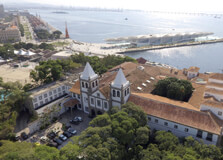
The Sao Bento Monastery, located in Rio de Janeiro, Brazil, was founded in 1590 by Benedictine monks. The monastery has a rich history dating back over 400 years, with the current building completed in the early 17th century. It has served as a place of worship, education, and community for generations, making it an important cultural and religious landmark in the city. Architecture and Design The Sao Bento Monastery is known for its stunning Baroque architecture, characterized by intricate details, ornate decorations, and grandeur. The monastery features a beautiful church with gold-leafed altars, frescoes, and sculptures, showcasing the craftsmanship of the period. The design of the monastery reflects the dedication of the Benedictine monks to creating a sacred space that inspires awe and reverence. Best Time to Visit The best time to visit the Sao Bento Monastery is during the early morning or late afternoon when the light is ideal for capturing the beauty of the architecture and design. Weekdays are generally less crowded than weekends, providing a more peaceful and contemplative experience for visitors. Additionally, visiting during special religious festivals or events can offer a unique insight into the cultural traditions of the monastery. Cultural Significance The Sao Bento Monastery holds significant cultural importance in Rio de Janeiro, as it is a symbol of faith, tradition, and history. The monastery's religious services, music performances, and art exhibitions showcase the vibrant cultural heritage of Brazil and the enduring influence of Catholicism on the country's identity. Visitors can immerse themselves in the rich tapestry of Brazilian culture by exploring the Sao Bento Monastery and learning about its role in shaping the community. Pilgrimage Practices Pilgrims often visit the Sao Bento Monastery to seek spiritual guidance, offer prayers, and participate in religious rituals. They may attend mass, light candles, or participate in processions to honor saints or religious figures. The monastery's serene atmosphere and sacred surroundings provide a peaceful setting for pilgrims to reflect, meditate, and connect with their faith. Pilgrimage practices at the Sao Bento Monastery offer individuals a meaningful and transformative experience that can deepen their spiritual journey. Dress Code and Etiquette Visitors to the Sao Bento Monastery are expected to dress modestly and respectfully in keeping with the sacred nature of the site. Both men and women should cover their shoulders and knees, and avoid wearing revealing or inappropriate clothing. It is also important to speak in hushed tones and refrain from using electronic devices or taking photographs in restricted areas. By adhering to the dress code and etiquette guidelines, visitors can show their respect for the monastery and its religious traditions. Activities and Experiences Visitors to the Sao Bento Monastery can participate in a variety of activities and experiences that offer a deeper understanding of the site's history and significance. Guided tours of the monastery provide insights into its architecture, art, and religious practices, while attending a church service offers a glimpse into the spiritual life of the Benedictine monks. Special events, such as musical performances or cultural festivals, showcase the vibrant culture of Rio de Janeiro and celebrate the monastery's legacy in the community. Art and Religious Symbols The Sao Bento Monastery is adorned with a wealth of art and religious symbols that reflect the spiritual beliefs and practices of the Benedictine order. Intricate carvings, paintings, and sculptures depict scenes from the Bible, saints, and religious figures, conveying the monastery's devotion to faith and worship. Symbols such as crosses, angels, and sacred geometry are incorporated into the architecture and design of the monastery, serving as reminders of the divine presence that permeates the space. Local Insights Local residents of Rio de Janeiro view the Sao Bento Monastery as a cherished landmark that holds a special place in the city's history and culture. Many locals have fond memories of attending religious services, concerts, or community events at the monastery, and value its role as a spiritual and social hub in the neighborhood. Residents often recommend visiting the Sao Bento Monastery to tourists as a way to experience the authentic spirit of Rio de Janeiro and connect with the city's rich cultural heritage.
Explore More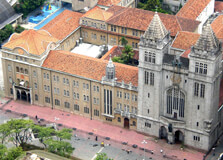
The Mosteiro De Sao Bento, located in Sao Paulo, Brazil, has a rich history dating back to 1598 when it was founded by monks from the Order of Saint Benedict. The monastery has played a significant role in the city's religious and cultural heritage, serving as a place of worship, contemplation, and education for centuries. Architecture and Design The Mosteiro De Sao Bento is known for its stunning Baroque architecture, characterized by intricate detailing, ornate decorations, and grandiose facades. The monastery's design features a harmonious blend of European and Brazilian influences, with beautiful frescoes, altarpieces, and sculptures adorning the interior. The cloisters, chapels, and gardens showcase the skilled craftsmanship of the architects and artisans who worked on the building. Best Time to Visit The best time to visit Mosteiro De Sao Bento is during the early morning or late afternoon when the sunlight enhances the beauty of the architectural details and creates a serene atmosphere for contemplation and prayer. Avoid visiting during peak hours to experience the monastery's tranquility and spiritual ambiance fully. Cultural Significance The Mosteiro De Sao Bento holds a significant cultural importance in Sao Paulo, serving as a symbol of faith, tradition, and history for the local community. The monastery's religious ceremonies, musical performances, and art exhibitions contribute to the city's cultural heritage and attract visitors from around the world. Pilgrimage Practices Many pilgrims visit the Mosteiro De Sao Bento to seek spiritual solace, participate in religious services, and pay homage to the patron saint of the monastery. Pilgrimage practices include attending Mass, lighting candles, praying at sacred shrines, and receiving blessings from the monks. The monastery provides a sacred space for pilgrims to deepen their faith and connect with the divine. Dress Code and Etiquette Visitors to the Mosteiro De Sao Bento are expected to dress modestly and respectfully when entering the monastery. Proper attire includes covering shoulders, wearing long pants or skirts, and avoiding revealing clothing. Silence and reverence are also essential etiquette practices to observe while inside the monastery, as a sign of respect for the monks and their religious practices. Activities and Experiences Guests at the Mosteiro De Sao Bento can participate in a variety of activities and experiences, including guided tours, spiritual retreats, choir performances, and workshops on Benedictine spirituality. Visitors can also explore the monastery's art collection, attend religious services, meditate in the gardens, and purchase religious souvenirs from the gift shop. The monastery offers a range of opportunities for personal growth, cultural enrichment, and spiritual renewal. Art and Religious Symbols The Mosteiro De Sao Bento is adorned with exquisite art and religious symbols that reflect the monastery's devotion to the Catholic faith and its commitment to artistic excellence. The interior features intricate carvings, gilded altars, stained glass windows, and sacred statues that depict biblical scenes and saints. Symbolic motifs such as crosses, doves, and lilies are prevalent throughout the monastery, serving as reminders of the monks' dedication to God and their mission of spreading the Gospel. Local Insights For a deeper appreciation of the Mosteiro De Sao Bento, visitors can engage with the local community, attend cultural events, and explore nearby attractions in Sao Paulo. Local insights include learning about the monastery's history from knowledgeable guides, participating in traditional rituals and festivals, and savoring Brazilian cuisine at local restaurants. By immersing themselves in the city's vibrant culture and connecting with its residents, visitors can gain a deeper understanding of the Mosteiro De Sao Bento and its significance in the fabric of Sao Paulo's heritage.
Explore More
About Linh Phuoc Pagoda History Linh Phuoc Pagoda, also known as Ve Chai Pagoda, is a Buddhist temple located in the city of Dalat, Vietnam. The pagoda was built in 1949 by the monk Thich Duc Nghiep and has since become one of the most popular attractions in the area. Architecture and Design The pagoda is known for its intricate architecture and unique design. The main hall of the pagoda is made entirely of glass bottles and ceramics, giving it a stunning and colorful appearance. The temple is adorned with intricate mosaics and sculptures, showcasing the skill and craftsmanship of the local artisans. Best Time to Visit The best time to visit Linh Phuoc Pagoda is during the spring months of March and April when the weather is mild and the flowers are in full bloom. However, the pagoda is open year-round and can be visited at any time. Cultural Significance Linh Phuoc Pagoda holds significant cultural importance for the local community and is a place of worship and pilgrimage for Buddhists in the region. The temple is also a popular tourist destination, attracting visitors from all over the world. Pilgrimage Practices Visitors to Linh Phuoc Pagoda are welcome to participate in the traditional Buddhist practices observed at the temple. This includes making offerings, lighting incense, and saying prayers for good fortune and blessings. Dress Code and Etiquette Visitors to the pagoda are expected to dress modestly and respectfully. This means covering shoulders and knees, and removing shoes before entering the temple grounds. It is also important to be mindful of one's behavior and show respect towards the local customs and traditions. Activities and Experiences At Linh Phuoc Pagoda, visitors can explore the intricate architecture and design of the temple, make offerings at the altars, and participate in meditation and prayer sessions. The pagoda also hosts cultural events and festivals throughout the year. Art and Religious Symbols The pagoda is adorned with stunning works of art, including intricate mosaics, sculptures, and paintings. These artworks often depict religious symbols and stories from Buddhist teachings, serving as a visual representation of the faith and beliefs of the local community. Local Insights Local residents and monks at Linh Phuoc Pagoda are happy to share their knowledge and insights with visitors. They can provide information about the history and significance of the temple, as well as offer guidance on how to participate in traditional practices and rituals.
Explore More
The Shwezigon Pagoda, located in Bagan, Myanmar, was built during the reign of King Anawrahta in the 11th century. It was originally intended to enshrine a bone and tooth relic of Gautama Buddha, making it a significant pilgrimage site for Buddhists. Architecture and Design The pagoda's design is a traditional Burmese bell shape, with a gold-plated stupa that shines brightly in the sunlight. The pagoda is surrounded by smaller stupas, shrines, and prayer halls, all adorned with intricate carvings and sculptures. Best Time to Visit The best time to visit Shwezigon Pagoda is during the cooler months of November to February when the weather is more comfortable for exploring the site. Additionally, visiting early in the morning or late in the evening provides a magical experience as the pagoda is bathed in the soft light of sunrise or sunset. Cultural Significance Shwezigon Pagoda is considered one of the holiest sites in Myanmar, attracting pilgrims and visitors from all over the country. The pagoda plays an important role in local festivals and ceremonies, symbolizing the unity of the Burmese people and their devotion to Buddhism. Pilgrimage Practices Pilgrims visiting Shwezigon Pagoda often perform circumambulation, walking around the pagoda in a clockwise direction while chanting prayers and making offerings. This practice is believed to bring blessings and merit to the devotee. Dress Code and Etiquette Visitors to Shwezigon Pagoda are expected to dress modestly, covering their shoulders and knees out of respect for the sacred site. It is also customary to remove shoes before entering the pagoda grounds and to avoid pointing feet towards the pagoda or Buddha images. Activities and Experiences Visitors to Shwezigon Pagoda can participate in meditation sessions, join in on chanting ceremonies, and explore the surrounding grounds filled with ancient ruins and lush gardens. It is also common to witness traditional alms-giving ceremonies to monks at the pagoda. Art and Religious Symbols The pagoda is adorned with intricate carvings, statues, and paintings depicting scenes from Buddhist mythology and teachings. The use of gold leaf and precious stones in the decoration symbolizes the wealth and devotion of the Burmese people towards their faith. Local Insights Locals believe that paying homage to Shwezigon Pagoda can bring luck, prosperity, and protection from harm. Many Burmese families make regular visits to the pagoda to offer prayers and make merit, reinforcing their connection to their cultural and religious heritage.
Explore More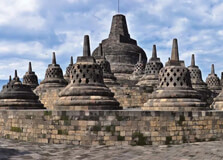
Borobudur Temple is a 9th-century Mahayana Buddhist temple in Magelang, Java, Indonesia. It was built during the reign of the Sailendra Dynasty at the height of their power. The temple was abandoned in the 14th century and rediscovered in the 19th century, leading to its restoration and preservation as a UNESCO World Heritage Site. Architecture and Design Borobudur Temple is a massive structure with a central dome surrounded by multiple layers of terraces. It has over 500 Buddha statues, 2,672 relief panels, and 72 stupas. The design of the temple is thought to represent the three realms of Buddhist cosmology: Kamadhatu (the world of desire), Rupadhatu (the world of forms), and Arupadhatu (the formless world). Best Time to Visit The best time to visit Borobudur Temple is during the dry season, which typically runs from April to October. The weather is pleasant, and the temple is less crowded during this time, allowing for a more peaceful and enjoyable experience. Sunrise and sunset are also popular times to visit the temple for stunning views and photo opportunities. Cultural Significance Borobudur Temple is a symbol of Indonesia's rich cultural and religious heritage. It is a place of pilgrimage and worship for Buddhists from around the world. The temple's design and carvings depict Buddhist teachings and stories, serving as an important educational and spiritual site. Pilgrimage Practices Pilgrims visiting Borobudur Temple often follow a clockwise path around the terraces, starting at the base and working their way up to the top. They may offer prayers, meditate, and participate in rituals to honor the Buddha and seek enlightenment. Some pilgrims also bring offerings such as flowers, incense, and candles. Dress Code and Etiquette Visitors to Borobudur Temple should dress modestly out of respect for the site's religious significance. This means covering shoulders and knees and removing shoes before entering certain areas. It is also important to be mindful of noise levels, refrain from climbing on the structures, and not touch the carvings or statues. Activities and Experiences Aside from exploring the temple itself, visitors to Borobudur can enjoy cultural performances, traditional crafts demonstrations, and guided tours of the surrounding area. There are also opportunities for hiking, biking, and hot air balloon rides to get a different perspective of the temple and its surroundings. Art and Religious Symbols The art and carvings at Borobudur Temple are rich in symbolism and meaning. The relief panels tell stories from Buddhist scriptures, depicting scenes of daily life, spiritual teachings, and historical events. The Buddha statues and stupas represent enlightenment and the path to nirvana, inspiring contemplation and reflection. Local Insights Visitors to Borobudur Temple can gain local insights by talking to guides, attending cultural programs, and visiting nearby villages. Learning about Javanese traditions, beliefs, and customs can enrich the experience and provide a deeper understanding of the significance of the temple within the local community.
Explore More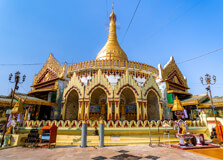
The Kaba Aye Pagoda, also known as the World Peace Pagoda, was built in 1952 to commemorate the 6th Buddhist council, which took place in Yangon. The pagoda was constructed to hold the Sixth Buddhist Synod which lasted for two years from 1954 to 1956. It is a significant religious site for Buddhists in Myanmar and an important pilgrimage destination. Architecture and Design The Kaba Aye Pagoda features a unique design with a traditional Burmese architecture style. The pagoda is surrounded by a stunning garden filled with lush greenery and serene ponds. The main stupa is adorned with intricate carvings and gold-leaf decorations, giving it a majestic appearance. The pagoda's architecture reflects the rich cultural heritage of Myanmar and is a testament to the country's devotion to Buddhism. Best Time to Visit The best time to visit the Kaba Aye Pagoda is during the early morning or late afternoon when the weather is cooler and the light is perfect for photography. The pagoda is less crowded during these times, allowing visitors to enjoy a peaceful and spiritual experience. Cultural Significance The Kaba Aye Pagoda is considered a symbol of peace and harmony in Myanmar. It is believed that visiting the pagoda and paying homage to the Buddha can bring blessings and good fortune to devotees. The pagoda is also a place for meditation and reflection, offering a tranquil space for spiritual growth and enlightenment. Pilgrimage Practices Many Buddhists from Myanmar and around the world make pilgrimages to the Kaba Aye Pagoda to pay their respects and offer prayers. Devotees often walk around the pagoda in a clockwise direction, chanting prayers and making offerings at the shrines. Pilgrims may also meditate or participate in religious ceremonies held at the pagoda. Dress Code and Etiquette Visitors to the Kaba Aye Pagoda are required to dress modestly and respectfully. Both men and women should wear clothing that covers their shoulders and knees out of respect for the religious site. Shoes and socks must be removed before entering the pagoda, and visitors should refrain from loud conversations or disruptive behavior. Activities and Experiences Visitors to the Kaba Aye Pagoda can participate in various activities and experiences, such as attending meditation classes, exploring the beautiful gardens, and witnessing traditional Buddhist ceremonies. The pagoda also hosts cultural events and festivals throughout the year, providing a unique opportunity to learn more about Myanmar's rich religious traditions. Art and Religious Symbols The Kaba Aye Pagoda is adorned with exquisite artwork and religious symbols that reflect the teachings of Buddhism. Intricate carvings, colorful paintings, and statues of the Buddha can be found throughout the pagoda, creating a sacred and inspiring atmosphere. The artwork at the pagoda serves as a visual representation of Buddhist philosophy and teachings. Local Insights Visitors to the Kaba Aye Pagoda can gain valuable insights into Myanmar's rich cultural heritage and religious traditions. Local guides are available to provide information about the history and significance of the pagoda, as well as offer insights into Buddhist practices and beliefs. By interacting with local residents and participating in cultural activities, visitors can deepen their understanding of Myanmar's spiritual heritage.
Explore More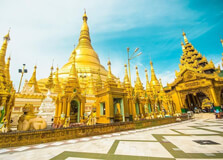
Botataung Pagoda in Yangon, Myanmar, has a rich history dating back to over 2,500 years. Legend has it that the pagoda enshrines a sacred hair relic of the Buddha, brought by two Indian merchants, Tapussa and Bhallika. The pagoda was destroyed during World War II but was meticulously reconstructed, preserving its ancient heritage. Architecture and Design The Botataung Pagoda boasts a unique design with a hollow interior that visitors can walk through, showcasing exquisite gold-plated decorations and intricate carvings. The pagoda's stupa stands tall at 40 meters high, gleaming in the sunlight and reflecting the rich cultural heritage of Myanmar. Best Time to Visit The best time to visit Botataung Pagoda is during the cooler months of November to February when the weather is pleasant. Avoid visiting during the hot and rainy season from June to September to fully enjoy the experience. Cultural Significance Botataung Pagoda holds significant cultural importance for the local community, serving as a place of worship, meditation, and spiritual enlightenment. The pagoda's history and relics attract pilgrims and tourists alike, seeking blessings and a deeper connection with Buddhist traditions. Pilgrimage Practices Visitors to Botataung Pagoda can participate in traditional Buddhist rituals such as offering flowers, incense, and candles as a sign of respect and devotion. Pilgrims often circumambulate the stupa clockwise, reciting prayers and seeking blessings for health, prosperity, and well-being. Dress Code and Etiquette When visiting Botataung Pagoda, it is essential to dress modestly and respectfully, covering shoulders and knees. Remove shoes before entering the pagoda and follow proper etiquette by avoiding loud noises, photography in restricted areas, and disrupting worship rituals. Activities and Experiences Visitors to Botataung Pagoda can explore the intricate architecture, learn about its history from knowledgeable guides, and participate in meditation sessions to find inner peace and spiritual enlightenment. Witness the puja ceremonies and pay homage to the sacred relics enshrined within the pagoda. Art and Religious Symbols The Botataung Pagoda is adorned with intricate sculptures, paintings, and religious symbols depicting stories from Buddha's life and teachings. Marvel at the golden decorations, intricate carvings, and intricate details that reflect the artistic prowess and devotion of the craftsmen who built the pagoda. Local Insights Engage with local monks and devotees at Botataung Pagoda to gain deeper insights into Myanmar's rich Buddhist traditions, rituals, and practices. Visit nearby markets and stalls to sample local cuisine, purchase souvenirs, and immerse yourself in the vibrant culture of Yangon.
Explore More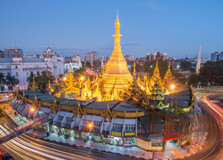
The Sule Pagoda in Yangon, Myanmar, is believed to be over 2,000 years old and holds great historical significance as a place of worship and a symbol of national pride. It is said to enshrine a hair relic of the Buddha, making it a sacred site for Buddhists. Architecture and Design The iconic pagoda stands at the heart of Yangon, with a unique octagonal shape and a golden stupa that glistens in the sunlight. The intricate architecture and design of the pagoda reflect a blend of Burmese and Mon styles, showcasing exquisite craftsmanship and attention to detail. Best Time to Visit The best time to visit Sule Pagoda is during the early morning or late afternoon when the weather is cooler and the crowds are smaller. Avoid visiting during midday when the sun is at its peak, as the heat can be intense. Cultural Significance Sule Pagoda holds immense cultural significance as a symbol of unity and spiritual devotion for the people of Myanmar. It is a place where locals gather to pray, meditate, and participate in religious ceremonies, reinforcing the country's strong Buddhist heritage. Pilgrimage Practices Pilgrims visit Sule Pagoda to offer prayers, light incense, and make offerings to the Buddha. Many believers perform circumambulation around the pagoda, walking clockwise as a form of devotion and reverence. Dress Code and Etiquette Visitors are required to dress modestly when visiting Sule Pagoda, covering their shoulders and knees out of respect for the sacred site. Remove your shoes before entering the pagoda precinct and remember to maintain a peaceful and respectful demeanor while inside. Activities and Experiences Aside from exploring the pagoda's grounds and admiring its architecture, visitors can participate in meditation sessions, attend religious ceremonies, and interact with local worshippers to gain a deeper understanding of Buddhist practices and beliefs. Art and Religious Symbols The interior of Sule Pagoda is adorned with intricate carvings, colorful murals, and gilded statues that depict various Buddhist deities and stories from the scriptures. Each symbol and artwork holds profound spiritual significance and serves as a source of inspiration for worshippers. Local Insights Local residents consider Sule Pagoda to be a spiritual hub and a symbol of hope and resilience in the face of adversity. They view the pagoda as a place of solace and community, where people from all walks of life can come together to seek guidance and peace.
Explore More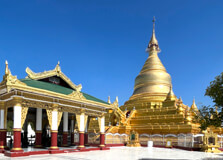
The Kuthodaw Pagoda, located in Mandalay, is known as the "world's largest book" due to its collection of 729 marble slabs inscribed with Buddhist scriptures. The pagoda was built in the 19th century by King Mindon, who wanted to preserve the teachings of Buddha for future generations. History, Architecture, and Design The Kuthodaw Pagoda's construction was completed in 1857 and is a fine example of traditional Burmese architecture. The central stupa is surrounded by hundreds of smaller stupas, each containing a marble slab with Buddhist scriptures engraved on it. The pagoda's design reflects the rich cultural heritage of Myanmar and its devotion to the Buddhist faith. Best Time to Visit The best time to visit the Kuthodaw Pagoda is during the cooler months from November to February when the weather is more pleasant. It is also recommended to visit early in the morning or late in the afternoon to avoid the crowds and enjoy the peaceful atmosphere of the pagoda. Cultural Significance The Kuthodaw Pagoda holds great cultural significance for the people of Myanmar as it is considered one of the most sacred Buddhist sites in the country. It is a place of worship, meditation, and reflection for both locals and pilgrims from around the world. Pilgrimage Practices Pilgrims often visit the Kuthodaw Pagoda to pay their respects to the Buddha and seek spiritual enlightenment. They may recite prayers, make offerings, and perform rituals as part of their pilgrimage practices. The pagoda is a place of spiritual renewal and rejuvenation for those seeking peace and tranquility. Dress Code and Etiquette Visitors to the Kuthodaw Pagoda are expected to dress modestly and respectfully. This means covering shoulders and knees and removing shoes before entering the pagoda grounds. It is important to show respect for the sacredness of the site by following proper etiquette and behaving appropriately while on the premises. Activities and Experiences Visitors to the Kuthodaw Pagoda can explore the complex and admire the intricate details of its architecture. They can also learn about the history and cultural significance of the pagoda through guided tours or by speaking with local guides. Meditating and reflecting on the teachings of Buddha are common activities for visitors seeking spiritual enlightenment. Art and Religious Symbols The Kuthodaw Pagoda is adorned with intricate carvings, paintings, and sculptures that depict scenes from Buddhist scriptures and teachings. The pagoda's architecture incorporates religious symbols such as lotus flowers, Buddha images, and mythical creatures that hold deep spiritual significance for followers of the faith. Local Insights Local residents of Mandalay view the Kuthodaw Pagoda as a symbol of their cultural heritage and religious devotion. They take pride in the pagoda's status as the "world's largest book" and often participate in cultural events and religious ceremonies held at the site. Local insights can provide visitors with a deeper understanding of the significance of the pagoda in Myanmar's history and culture.
Explore More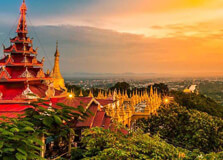
The Mahamuni Buddha Temple, located in Mandalay, Myanmar, is one of the most revered Buddhist temples in the country. It is home to a sacred Buddha image that is believed to have been cast during the lifetime of Siddhartha Gautama, the historical Buddha. The temple is a significant pilgrimage site for Buddhists and attracts visitors from all over the world who come to pay their respects to the revered Buddha image. History, Architecture, and Design The Mahamuni Buddha Temple was originally built in 1784 by King Bodawpaya of the Konbaung Dynasty. The temple's architecture is typical of Burmese Buddhist temples, with a central stupa surrounded by smaller stupas, prayer halls, and corridors. The most striking feature of the temple is the massive Buddha image, which is covered in layers of gold leaf applied by devotees over the centuries. The image is housed in a chamber adorned with intricate carvings and traditional Burmese design elements. Best Time to Visit The best time to visit the Mahamuni Buddha Temple is during the early morning or late afternoon when the temple is less crowded, and the light is soft and golden, creating a serene atmosphere perfect for meditation and reflection. Cultural Significance The Mahamuni Buddha Temple is considered one of the most important religious sites in Myanmar and is a focal point for Buddhist worship and devotion. The temple plays a vital role in the spiritual and cultural life of the Burmese people and is a symbol of their faith and heritage. Pilgrimage Practices Visitors to the Mahamuni Buddha Temple often participate in traditional Buddhist practices, such as offering flowers, candles, and incense to the Buddha image, as well as chanting prayers and meditating in the temple's peaceful surroundings. Dress Code and Etiquette Visitors to the Mahamuni Buddha Temple are required to dress modestly and respectfully, covering their shoulders and knees. It is also customary to remove shoes before entering the temple and to show reverence by bowing or kneeling in front of the Buddha image. Activities and Experiences Aside from participating in traditional Buddhist rituals, visitors to the Mahamuni Buddha Temple can explore the temple grounds, admire the stunning architecture and carvings, and observe the daily life of the monks who reside in the temple complex. The temple also hosts cultural events and religious ceremonies throughout the year. Art and Religious Symbols The Mahamuni Buddha Temple is adorned with intricate carvings, paintings, and sculptures that depict scenes from Buddhist mythology and teachings. The temple's architecture and design elements serve as symbolic representations of Buddhist beliefs and principles, providing visitors with a deeper understanding of the religion. Local Insights Visiting the Mahamuni Buddha Temple provides visitors with a unique opportunity to immerse themselves in Burmese culture and spiritual traditions. Interacting with local worshippers and monks can offer valuable insights into the daily practices and beliefs of the Burmese people, making the experience more enriching and meaningful.
Explore More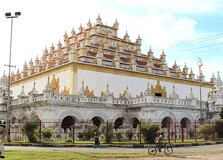
Atumashi Monastery, located in Mandalay, Myanmar, holds a rich history dating back to the late 1800s. The monastery was built by King Mindon, who also constructed the nearby Shwenandaw Monastery. The architecture of Atumashi Monastery is impressive, with intricate carvings, ornate decorations, and a grand prayer hall. The design features traditional Burmese elements, showcasing the country's unique architectural style. Best Time to Visit The best time to visit Atumashi Monastery is during the dry season, which runs from November to February. The weather during this time is cool and pleasant, making it ideal for exploring the monastery and its surroundings. Cultural Significance Atumashi Monastery holds great cultural significance in Myanmar as a place of worship and meditation. It is a popular destination for both locals and tourists seeking spiritual enlightenment and connection with the country's rich religious heritage. Pilgrimage Practices Pilgrims from all over Myanmar visit Atumashi Monastery to pay their respects and seek blessings from the monks. The monastery serves as a sacred space for meditation and reflection, making it an important site for spiritual journeys. Dress Code and Etiquette Visitors to Atumashi Monastery are required to dress modestly and remove their shoes before entering the prayer hall. It is important to show respect for the monks and the sacred space by following the dress code and practicing proper etiquette during your visit. Activities and Experiences Visitors to Atumashi Monastery can participate in guided tours, meditation sessions, and cultural workshops to learn more about the religious practices and traditions of Myanmar. The serene atmosphere of the monastery provides a peaceful setting for reflection and spiritual growth. Art and Religious Symbols The monastery is adorned with intricate artwork and religious symbols that reflect the teachings of Buddhism. From colorful murals to golden statues, Atumashi Monastery offers a glimpse into the spiritual world of Myanmar and the beliefs of its people. Local Insights Local residents often visit Atumashi Monastery to seek guidance from the monks and participate in religious ceremonies. By interacting with the community and learning from their experiences, visitors can gain a deeper understanding of Myanmar's cultural and spiritual traditions.
Explore More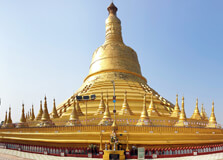
Shwemawdaw Paya, located in Bago, Myanmar, is one of the most iconic Buddhist pagodas in the country. With a history dating back over a thousand years, this pagoda has withstood the test of time and witnessed the rise and fall of various dynasties. It is said to have been originally built by the Mon people, but was later expanded and renovated by various kings throughout the centuries. Architecture and Design The pagoda's striking design features a stupa that reaches a height of over 375 feet, making it the tallest pagoda in Myanmar. Its golden spire glistens in the sunlight and is adorned with intricate carvings and decorations. The pagoda is surrounded by smaller shrines and pavilions, creating a serene and spiritually charged atmosphere for visitors. Best Time to Visit The best time to visit Shwemawdaw Paya is during the dry season, which runs from November to February. The weather is cooler and more pleasant during this time, making it ideal for exploring the pagoda and its surroundings. Additionally, many festivals and ceremonies take place during these months, adding to the vibrant atmosphere of the place. Cultural Significance Shwemawdaw Paya holds immense cultural significance for the people of Myanmar. It is considered a sacred site and a place of worship for Buddhists, who come from far and wide to pay their respects and make offerings at the pagoda. The pagoda also plays a role in local festivals and ceremonies, adding to its cultural importance. Pilgrimage Practices Many Buddhists undertake pilgrimages to Shwemawdaw Paya as part of their spiritual journey. Pilgrims often walk in a clockwise direction around the pagoda, reciting prayers and making offerings as they go. It is believed that these practices bring merit and blessings to those who participate in them, making the pilgrimage a deeply meaningful experience. Dress Code and Etiquette Visitors to Shwemawdaw Paya are expected to dress modestly and respectfully, covering their shoulders and knees. It is also customary to remove shoes before entering the pagoda grounds, as a sign of respect for the sacred site. Visitors should also be mindful of their behavior and avoid loud or disruptive conduct while on the premises. Activities and Experiences Visitors to Shwemawdaw Paya can engage in a variety of activities and experiences during their visit. They can explore the pagoda's intricate architecture, take part in meditation sessions, or join in on religious ceremonies. Additionally, the pagoda's surroundings offer opportunities for peaceful walks and contemplation, making it a serene and spiritually uplifting destination. Art and Religious Symbols The pagoda is adorned with various religious symbols and artworks that hold deep significance for Buddhist practitioners. Intricate carvings, statues of Buddha, and elaborate decorations can be found throughout the pagoda, adding to its beauty and spiritual aura. These artworks serve as reminders of the Buddhist teachings and inspire devotion among visitors. Local Insights Local residents and monks play a vital role in maintaining the spiritual and cultural traditions of Shwemawdaw Paya. They offer insights into the history and significance of the pagoda, as well as guidance on proper etiquette and practices for visitors. Engaging with locals can provide visitors with a deeper understanding of the pagoda's place in Myanmar's cultural and religious landscape.
Explore More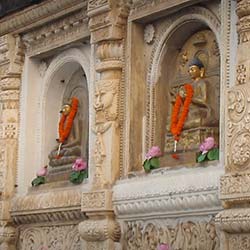
About Mahabodhi Temple, Bodhgaya Bodhgaya, located in the state of Bihar, India, is famous as the place where Prince Siddhartha Gautama attained enlightenment and became the Buddha. The Mahabodhi Temple in Bodhgaya is a UNESCO World Heritage Site and is considered one of the holiest Buddhist pilgrimage sites in the world. History, Architecture, and Design The Mahabodhi Temple was originally built by Emperor Ashoka in the 3rd century BC to commemorate the Buddha's enlightenment. The current temple, however, dates back to the 5th-6th century AD and is a fine example of Indian brickwork and sculptural art. The architecture reflects a blend of Indian, Chinese, and Burmese styles, with a central tower rising to a height of 55 meters. Best Time to Visit The best time to visit the Mahabodhi Temple is during the winter months from October to March when the weather is pleasant and conducive for exploring the complex. Avoid visiting during the summer months as the temperatures can soar and make sightseeing uncomfortable. Cultural Significance The Mahabodhi Temple holds immense cultural significance as the place where the Buddha achieved enlightenment. It is a sacred site for Buddhists around the world and attracts pilgrims and tourists alike. The temple complex also houses a sacred Bodhi tree, which is believed to be a direct descendant of the tree under which the Buddha meditated. Pilgrimage Practices Pilgrims visiting the Mahabodhi Temple often perform rituals such as circumambulating the temple, offering prayers, and meditating under the Bodhi tree. It is a place for reflection, meditation, and seeking spiritual enlightenment. Pilgrims also offer flowers, incense, and candles as offerings to the Buddha. Dress Code and Etiquette Visitors are required to dress modestly and respectfully when visiting the Mahabodhi Temple. Avoid wearing revealing clothing or shorts, and remember to remove your shoes before entering the temple complex. Silence and respect for the sacredness of the site are also important. Activities and Experiences Visitors to the Mahabodhi Temple can participate in meditation sessions, attend Buddhist teachings, and explore the temple complex and its surrounding gardens. The temple also hosts various cultural events and ceremonies throughout the year, providing visitors with a rich and immersive experience. Art and Religious Symbols The Mahabodhi Temple is adorned with intricate carvings, sculptures, and reliefs depicting scenes from the life of the Buddha and various Buddhist deities. The temple's architecture and design are rich in symbolism and serve as a visual representation of Buddhist beliefs and teachings. Local Insights Locals in Bodhgaya are deeply connected to the Mahabodhi Temple and often participate in the daily rituals and ceremonies held at the site. Visiting during festivals such as Buddha Purnima or the Dalai Lama's teachings can provide a unique insight into the local culture and traditions. Interacting with locals and attending local events can enhance your overall experience of Bodhgaya.
Explore More
About the Bodhi Tree, Bodhgaya History The Bodhi Tree in Bodhgaya is believed to be the exact spot where Siddhartha Gautama, the Buddha, attained enlightenment over 2,500 years ago. The tree is a descendant of the original tree under which the Buddha meditated. It has since become a sacred site for Buddhists from around the world. Architecture and Design The Bodhi Tree is a majestic fig tree that stands within the Mahabodhi Temple complex. The temple itself is a magnificent example of ancient Indian architecture, with intricate carvings and sculptures depicting the life of the Buddha. The tree is surrounded by a low fence to protect its roots, and devotees can meditate under its branches. Best Time to Visit Cultural Significance The Bodhi Tree is considered one of the most important Buddhist pilgrimage sites in the world. It symbolizes the Buddha's enlightenment and serves as a focal point for meditation and prayer. Pilgrims from all over the world come to Bodhgaya to pay their respects to the tree and seek spiritual enlightenment. Pilgrimage Practices Visitors to the Bodhi Tree often participate in traditional Buddhist rituals, such as offering incense, flowers, and prayers. Many pilgrims also choose to circumambulate the tree, walking in a clockwise direction as a sign of respect. Some may spend hours meditating under the tree, seeking inner peace and enlightenment. Dress Code and Etiquette When visiting the Bodhi Tree, it is important to dress modestly and respectfully. Both men and women should cover their shoulders and legs, and remove shoes before entering the temple complex. Silence and mindfulness are encouraged, as the site is considered a place of contemplation and spiritual reflection. Activities and Experiences Art and Religious Symbols The Bodhi Tree and the Mahabodhi Temple are adorned with intricate carvings and statues that depict scenes from the life of the Buddha. These artistic representations serve as a visual reminder of the teachings of Buddhism and the importance of enlightenment. The tree itself is a living symbol of growth and transformation. Local Insights Local guides and monks are often available to provide insight into the history and significance of the Bodhi Tree. They can offer spiritual guidance and answer questions about Buddhist practices and beliefs. Visitors can also explore the nearby villages and markets to experience local culture and cuisine, gaining a deeper understanding of the region's traditions and way of life.
Explore More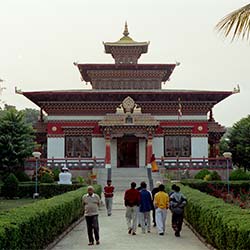
About the Chinese Temple in Bodhgaya History, Architecture, and Design The Chinese Temple in Bodhgaya, also known as the Indosan Nippon Japanese Temple, is a peaceful and beautifully designed structure that serves as a place of worship and meditation for Buddhist practitioners. The temple was built in the 1970s with contributions from various countries, including China, Japan, and India. The architecture of the temple blends traditional Chinese and Japanese design elements, creating a unique and tranquil space for visitors to explore and reflect. Best Time to Visit The best time to visit the Chinese Temple in Bodhgaya is during the winter months, from October to March, when the weather is cool and pleasant. This time of year is ideal for exploring the temple grounds and participating in meditation and prayer sessions without the heat and humidity of the summer months. Cultural Significance The Chinese Temple holds great cultural significance for Buddhists around the world, as it is located in Bodhgaya, the site where Siddhartha Gautama, the Buddha, attained enlightenment. The temple is a place of pilgrimage and spiritual retreat for those seeking to deepen their connection to the teachings of Buddhism and honor the historical importance of Bodhgaya. Pilgrimage Practices Many Buddhists visit the Chinese Temple in Bodhgaya as part of a pilgrimage to important Buddhist sites in India. Pilgrims often participate in meditation, prayer, and ritual practices at the temple, seeking spiritual renewal and enlightenment. Visiting the temple is a way for Buddhists to connect with the teachings of the Buddha and deepen their understanding of the path to enlightenment. Dress Code and Etiquette Visitors to the Chinese Temple in Bodhgaya are expected to dress modestly and respectfully, covering their shoulders and knees. It is customary to remove your shoes before entering the temple and to conduct yourself quietly and respectfully while on the temple grounds. It is important to follow the instructions of temple staff and to avoid taking photographs in areas where it is prohibited. Activities and Experiences Visitors to the Chinese Temple in Bodhgaya can participate in a variety of activities and experiences, including meditation sessions, prayer ceremonies, and cultural performances. The temple grounds offer a peaceful and serene environment for contemplation and reflection, with beautiful gardens and ornate statues that create a sense of tranquility and spiritual connection. Art and Religious Symbols The Chinese Temple is adorned with beautiful artwork and religious symbols that hold deep significance for Buddhist practitioners. Intricate carvings, colorful murals, and statues of Buddhas and Bodhisattvas can be found throughout the temple, creating a visually stunning and spiritually inspiring environment for visitors to explore and appreciate. Local Insights Local residents and monks in Bodhgaya provide valuable insights and perspectives on the Chinese Temple, sharing the history and significance of the temple as well as offering guidance on how to best experience and appreciate the spiritual and cultural aspects of the site. Engaging with locals can enhance your visit to the temple and deepen your understanding of the Buddhist traditions and practices that are observed there.
Explore More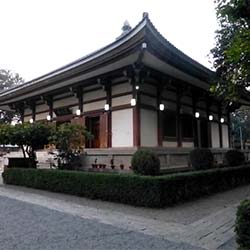
Indosan Nippon Japanese Temple
About Indosan Nippon Japanese Temple, Bodhgaya History The Indosan Nippon Japanese Temple, also known as the Japanese Buddhist Temple, is a tranquil sanctuary located in Bodhgaya, India. The temple was built in 1972 by the Japanese Buddhist monk Nichidatsu Fujii, in collaboration with Indian and Japanese governments. It serves as a symbol of the strong cultural and religious ties between Japan and India. Architecture and Design The Indosan Nippon Japanese Temple features traditional Japanese architectural elements such as a pagoda-style roof, wooden lattice windows, and intricate carvings. The serene garden surrounding the temple adds to its peaceful ambiance and makes it a perfect place for meditation and reflection. Best Time to Visit The best time to visit the Indosan Nippon Japanese Temple is during the winter months from October to March when the weather is pleasant and ideal for exploring the temple grounds. Avoid visiting during the summer months as the temperatures can be scorching hot. Cultural Significance The Japanese Buddhist Temple holds great cultural significance as a place of worship and spiritual practice for followers of Buddhism. It is a sanctuary for pilgrims seeking enlightenment and inner peace, and a symbol of the enduring friendship between Japan and India. Pilgrimage Practices Pilgrims visiting the Indosan Nippon Japanese Temple often engage in meditation, chanting, and offering prayers at the temple. It is a sacred place where devotees can connect with their spiritual beliefs and seek guidance on their path to enlightenment. Dress Code and Etiquette Visitors are required to dress modestly and remove their shoes before entering the temple premises as a sign of respect. It is important to maintain silence and avoid any disruptive behavior while inside the temple to ensure a peaceful environment for meditation and prayer. Activities and Experiences Visitors to the Indosan Nippon Japanese Temple can participate in meditation sessions, attend prayer ceremonies, and explore the beautiful garden surrounding the temple. The serene atmosphere of the temple provides a perfect setting for spiritual contemplation and relaxation. Art and Religious Symbols The temple is adorned with various religious symbols and artwork that represent Buddhist teachings and concepts. Intricate carvings, paintings, and sculptures can be found throughout the temple, creating a visually stunning and spiritually inspiring environment for visitors. Local Insights Local residents and guides can provide valuable insights into the history and significance of the Indosan Nippon Japanese Temple, offering a deeper understanding of its cultural and religious importance. Engaging with the local community can enrich the overall experience of visiting this sacred site.
Explore More